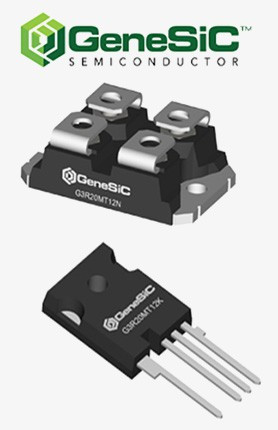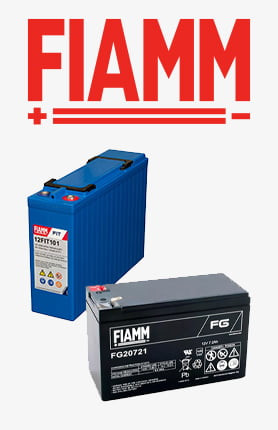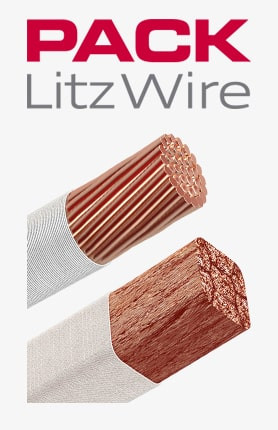Debes estar logueado
-
moreX
-
Componentes
-
-
Category
-
Semiconductores
- Diodos
- Tiristores
-
Módulos con aislamiento eléctrico
- Módulos con aislamiento eléctrico | VISHAY (IR)
- Módulos con aislamiento eléctrico | INFINEON (EUPEC)
- Módulos con aislamiento eléctrico | Semikron
- Módulos con aislamiento eléctrico | POWEREX
- Módulos con aislamiento eléctrico | IXYS
- Módulos con aislamiento eléctrico | POSEICO
- Módulos con aislamiento eléctrico | ABB
- Módulos con aislamiento eléctrico | TECHSEM
- Go to the subcategory
- Rectificadores de puente
-
Transistores
- Transistores | GeneSiC
- Módulos SiC MOSFET | Mitsubishi
- Módulos SiC MOSFET | STARPOWER
- Módulos ABB SiC MOSFET
- Módulos IGBT | MITSUBISHI
- Módulos de transistores | MITSUBISHI
- Módulos MOSFET | MITSUBISHI
- Módulos de transistores | ABB
- Módulos IGBT | POWEREX
- Módulos IGBT | INFINEON (EUPEC)
- Elementos semiconductores de carburo de silicio (SiC)
- Go to the subcategory
- Controladores de puerta
- Bloques de energía
- Go to the subcategory
- Convertidores de corriente y tensión LEM
-
Componentes pasivos (condensadores, resistencias, fusibles, filtros)
- Resistencias
-
Fusibles
- Fusibles miniatura para circuitos electrónicos, serie ABC y AGC
- Fusibles tubulares de acción rápida
- Eslabones fusibles de retardo de tiempo con características GL / GG y AM
- Eslabones fusibles ultrarrápidos
- Fusibles de acción rápida (estándar británico y estadounidense)
- Fusibles de acción rápida (estándar europeo)
- Fusibles de tracción
- Eslabones fusibles de alto voltaje
- Go to the subcategory
-
Condensadores
- Condensadores de motor
- Condensadores electrolíticos
- Condensadores de película
- Condensadores de potencia
- Condensadores para circuitos de CC
- Condensadores de corrección del factor de potencia
- Condensadores de alto voltaje
- Condensadores de calentamiento por inducción
- Condensadores de almacenamiento de energía y pulsos
- Condensadores de ENLACE CC
- Condensadores para circuitos AC/DC
- Go to the subcategory
- Filtros EMI
- Supercondensadores
-
Protección contra sobretensiones
- Protección contra sobretensiones para aplicaciones coaxiales
- Protección contra sobretensiones para sistemas de videovigilancia
- Protección contra sobretensiones para cableado de potencia
- Pararrayos para LED
- Descargadores de sobretensiones para energía fotovoltaica
- Protección del sistema de pesaje
- Protección contra sobretensiones para Fieldbus
- Go to the subcategory
- Go to the subcategory
-
Relés y contactores
- Teoría de relés y contactores
- Relés semiconductores de CA trifásicos
- Relés semiconductores de CA trifásicos
- Reguladores, controles y accesorios
- Arranques suaves y contactores de inversión
- Relés electromecánicos
- Contactores
- Interruptores giratorios
-
Relés semiconductores de CA monofásicos
- Relés semiconductores CA monofásicos, serie 1 | D2425 | D2450
- Relés semiconductores CA monofásicos, series CWA y CWD
- Relés semiconductores CA monofásicos de las series CMRA y CMRD
- Relés semiconductores de CA monofásicos, serie PS
- Relés semiconductores de CA dobles y cuádruples, serie D24 D, TD24 Q, H12D48 D
- Relés de estado sólido monofásicos, serie gn
- Relés semiconductores de ca monofásicos, serie ckr
- Relés AC monofásicos SERIE ERDA Y ERAA para carril DIN
- Relés AC monofásicos para corriente 150A
- Relés dobles de estado sólido integrados con disipador de calor para carril DIN
- Go to the subcategory
- Relés semiconductores CA monofásicos para PCB
- Relés de interfaz
- Go to the subcategory
- Núcleos y otros componentes inductivos
- Radiadores, varistores, protecciones térmicas
- Aficionados
- Aire Acondicionado, Accesorios para Armarios Eléctricos, Neveras
-
Baterías, cargadores, fuentes de alimentación de búfer e inversores
- Baterías, cargadores - descripción teórica
- Baterías de iones de litio. Baterías personalizadas. Sistema de gestión de batería (BMS)
- Pilas
- Cargadores de baterías y accesorios
- Fuente de alimentación de respaldo de UPS y fuentes de alimentación de búfer
- Convertidores y accesorios para fotovoltaica
- Almacen de energia
- Celdas de combustible
- Baterías de iones de litio
- Go to the subcategory
-
Automaticas
- Futaba Drone Parts
- Finales de carrera, microinterruptores
- Sensores, transductores
- Pirometría
- Contadores, temporizadores, medidores de panel
- Dispositivos de protección industrial
- Señalización luminosa y sonora
- Cámara termográfica
- Pantallas LED
- Botones e interruptores
-
Grabadores
- Grabadora AL3000
- Grabadora KR2000
- Grabadora KR5000
- Medidor HN-CH con función de registro de humedad y temperatura
- Consumibles para registradores
- Grabadora 71VR1
- Grabadora KR 3000
- Grabadores de PC de la serie R1M
- Grabadores de PC de la serie R2M
- Grabador de PC, 12 entradas aisladas - RZMS-U9
- Grabador de PC, USB, 12 entradas aisladas - RZUS
- Go to the subcategory
- Go to the subcategory
-
Cables, alambres Litz, conductos, conexiones flexibles
- alambres
- cables Litz
-
Cables para aplicaciones especiales
- Los cables de extensión y compensación
- Cables para termopares
- Los cables de conexión a PT czyjnków
- Multicore cables temp. -60 ° C a + 1400 ° C
- cables de media tensión SILICOUL
- ignición alambres
- Los cables calefactores
- temp núcleo único. -60 ° C a + 450 ° C
- conductores de trenes
- El calentamiento de los cables en el Ex
- Go to the subcategory
- camisas
-
trenzas
- trenzas planas
- trenzas ronda
- trenza muy flexible - plana
- trenza muy flexible - Ronda
- Copper cilíndrico trenzado
- Copper protector de la trenza y cilíndrica
- cintas de conexión flexibles
- Trenzas cilíndrico galvanizado y acero inoxidable
- Aislamiento de PVC trenzas de cobre - Temperatura 85 ° C
- aluminio trenzado plano
- Kit de conexión - trenzas y tubos
- Go to the subcategory
- Accesorios para la tracción
- Terminales de cable
- barras flexibles aisladas
- carril flexible multicapa
- sistemas de gestión de cables
- Conductos, tuberías
- Go to the subcategory
- View all categories
-
Semiconductores
-
-
- Suppliers
-
Applications
- Accionamientos de CA y CC (inversores)
- Automatización HVAC
- Automatización industrial
- Automatización industrial
- Calentamiento por inducción
- Componentes para atmósferas potencialmente explosivas (EX)
- Dispositivos de protección industrial
- Energy bank
- Equipos para Armarios de Distribución, Control y Telecomunicaciones
- Fuentes de alimentación (UPS) y sistemas rectificadores
- Impresión
- Máquinas de soldar y máquinas de soldar
- Máquinas herramientas CNC
- Máquinas para secar y procesar madera
- Máquinas para termoformado de plásticos
- Medición y regulación de temperatura
- Medición y regulación de temperatura
- Minería, metalurgia y fundación
- Motores y transformadores
- Tracción de tranvía y ferrocarril
-
Instalación
-
-
Inductores
-
-
Dispositivos de inducción
-
-
https://www.dacpol.eu/pl/naprawy-i-modernizacje
-
-
Servicio
-
- Contact
- Zobacz wszystkie kategorie
What are air ionizers and how do they work?

What Are Air Ionizers and How Do They Work?
Air ionizers are devices that play a crucial role in improving indoor air quality. By removing pollutants and enhancing breathing comfort, they are becoming an increasingly popular choice among those who care about health and indoor living comfort. In this article, we will take a closer look at what air ionizers are and how they work to provide clean and fresh air in our homes, offices, and industrial settings.
What Are Air Ionizers?
Air ionizers are devices that generate negative or positive ions to remove pollutants from the air. Air ionization involves adding extra electrons (negative ions) to air molecules or removing them (positive ions), leading to the neutralization of pollutants such as pollen, allergens, viruses, bacteria, and other harmful substances.
Air ionizers are commonly used to remove electrostatic charges in various industrial sectors, such as the electronics industry, paper production, printing houses, and film production.
How Do Air Ionizers Work?
1. Ion Generation: Air ionizers generate negative or positive ions through various methods, such as corona discharge, UV radiation ionization, or electron emission. These ions are then released into the air, where they attract and neutralize pollutants.
2. Pollutant Neutralization: Negative or positive ions emitted by air ionizers attract pollutants such as dust, bacteria, viruses, and allergens suspended in the air. After attracting the pollutants, the ions neutralize them, causing them to become heavier and settle on the floor or other surfaces.
3. Air Purification: After neutralizing pollutants, the ionized air is purified and becomes fresher and healthier to breathe. This process helps reduce allergens, eliminate unpleasant odors, and improve the overall air quality in a room.
Advantages of Air Ionizers
1. Effective Air Purification in Large Spaces: Industrial ionizers are designed to work in large industrial spaces, such as factories, warehouses, production halls, or laboratories. Their greater power and efficiency enable effective air purification in areas with high levels of pollution.
2. Reduction of Pollution Risk: Industrial environments often have high concentrations of air pollutants such as dust, chemical fumes, smoke, or toxins. Industrial ionizers can effectively reduce these pollutants, providing workers with safe and healthy working conditions.
3. Protection Against Toxic Substances: Some industrial sectors may involve harmful chemical substances that can be detrimental to workers' health. Industrial ionizers can help eliminate these substances from the air, providing additional protection for workers.
4. Minimization of Fire Risk: In some industrial facilities, the presence of dust and other flammable substances can increase the risk of fire. Industrial ionizers can help reduce these substances from the air, contributing to minimizing fire risk and increasing worker safety.
5. Support for Production Processes: Clean and healthy air can improve the efficiency of production processes by providing optimal working conditions and health for workers. Industrial ionizers can thus contribute to increased productivity and profitability of industrial operations.
6. Long-lasting Performance: Industrial ionizers are typically designed to operate in harsh industrial conditions and feature robust construction and high durability. As a result, they can operate for a long time without frequent maintenance or part replacement.
Ionizers are an indispensable tool in the industrial sector, offering many benefits for companies and workers. Their ability to effectively purify air in large spaces and reduce harmful substances makes them essential for ensuring safe and healthy working conditions in industrial facilities.
Industrial Ionizers
Industrial ionizers are specialized devices designed for air purification in large industrial spaces, such as factories, warehouses, laboratories, or production halls. They have greater power and efficiency compared to home ionizers and are designed for harsh working conditions.
Types of Air Ionizers
1. Stationary Ionizers: Industrial ionizers can be permanently installed in rooms where continuous air purification is required. They have larger filters and fans that allow for the purification of larger volumes of air.
2. Portable Ionizers: Some industrial ionizers can be portable, allowing them to be used in different locations as needed. They are equipped with handles or wheels that facilitate transport and installation.
How to Choose an Industrial Ionizer?
When choosing an industrial ionizer, it's important to consider several key factors:
Performance: Choose an ionizer with adequate power and efficiency to purify the air in the required space.
Filtration: Check if the ionizer has effective filters that can capture various types of pollutants.
Safety: Ensure the ionizer has appropriate safety certifications and meets industrial air purification requirements.
Industrial ionizers are an indispensable tool in the fight against air pollution in workplaces. Their effectiveness in removing pollutants and versatile applications make them an increasingly popular choice in various industrial sectors. Therefore, it is worth considering investing in an industrial ionizer to ensure clean and healthy air for workers and protect the work environment from harmful substances.
Maintenance Tips for Ionizers
1. Regular Filter Cleaning: An important part of ionizer maintenance is regularly cleaning or replacing the filter. The filter is responsible for removing pollutants from the air, so it is necessary to regularly check its condition and clean or replace it according to the manufacturer's recommendations.
2. Monitoring Performance: Regular monitoring of the ionizer's performance is recommended to ensure it is operating as expected. In case of decreased performance or malfunction, appropriate repair or maintenance actions should be taken.
3. Cleaning the Housing: The ionizer housing also requires regular cleaning to prevent dust, dirt, and other pollutants from accumulating, which can affect its performance and durability. It is recommended to use mild detergents and soft cloths to clean the ionizer's outer surface.
4. Replacing Ionizing Elements: Some ionizers may require regular replacement of ionizing elements, such as electrodes or UV lamps, to ensure continuous and effective air ionization. Follow the manufacturer's recommendations for the frequency of replacing these elements.
5. Checking Ionization Levels: Regularly checking the level of ionization emitted by the ionizer can help monitor its effectiveness. In case of decreased ionization levels, consult the manufacturer for potential repairs or maintenance.
6. Periodic Inspections: Periodic technical inspections of ionizers by qualified personnel or service technicians are recommended to ensure the devices are functioning correctly and do not require repairs or maintenance.
Following these ionizer maintenance tips can help maintain their efficiency, durability, and safety. Regular maintenance is key to ensuring the long-term and reliable operation of the ionizer, which translates to improved air quality in the workplace and the effectiveness of its purification function.
Is It Worth Investing in an Industrial Ionizer?
Investing in an industrial ionizer can bring numerous benefits to companies and institutions operating in the industrial sector. Here are some reasons why it is worth considering purchasing an industrial ionizer:
1. Improvement of Working Conditions: Industrial ionizers eliminate air pollutants, which translates to better working conditions in industrial facilities. Clean air promotes employees' health and increases their comfort and efficiency.
2. Protection of Workers' Health: Reducing dust, allergens, and other harmful substances in the air can decrease the risk of respiratory diseases and allergies among workers, resulting in lower sick leave rates and higher productivity.
3. Ensuring Compliance with Standards: In some industries, such as pharmaceutical or food production, there are strict air quality standards. Industrial ionizers help maintain the appropriate air quality and meet regulatory requirements.
4. Protection of Equipment and Machinery: Clean air reduces the risk of damage to industrial equipment and machinery caused by dust, dirt, and other pollutants. Therefore, industrial ionizers can help extend the lifespan of equipment and reduce maintenance costs.
5. Minimization of Fire Risk: Removing dust and other flammable substances from the air can reduce the risk of fires in industrial facilities, thereby increasing employee safety and protecting company property and resources.
Summary
Industrial ionizers are effective tools for air purification in industrial facilities that can offer many benefits for companies and employees. By eliminating air pollutants, industrial ionizers can improve working conditions, protect workers' health, and ensure compliance with regulatory standards. Before purchasing an industrial ionizer, it is worth thoroughly analyzing your company's needs and choosing an appropriate model that meets industry expectations and requirements. Investing in an industrial ionizer can yield significant returns in terms of improved work efficiency, reduced equipment maintenance costs, and increased safety and comfort in the workplace.
Read also:
5 Best Methods for Assembling POWERSAFE (POWERLOCK) Connectors
How to Safely Connect POWERSAFE (POWERLOCK) Connectors
Use of Thermally Conductive Materials in the Automotive Industry
Publicaciones relacionadas
 Now available – DC/DC converters from PREMIUM
Now available – DC/DC converters from PREMIUM
 New release in DACPOL lighting for lathes – Kira covers
New release in DACPOL lighting for lathes – Kira covers




Deja un comentario